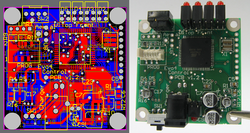I was pleasantly surprised this morning to receive a note from IPC indicating a change to its data collection methods.
In an announcement touting its new market research subscription series, IPC said it would use aggregate company data along with “carefully vetted secondary research.”
That sounded like IPC would now use data from the publicly traded EMS companies to help flesh out numbers its participating members report. A quick inquiry to IPC director of market research Sharon Starr confirmed as much.
“The growth rates reported each month will be based on IPC’s survey sample, but we will be looking at published data from the publicly traded EMS companies as a cross-check and may also use this data in our market-size calculations. If growth rates from the publicly-traded companies differ significantly from what our survey participants are telling us, we will address that in the reports,” Sharon told me.
This represents a departure from the past 20 years, where IPC would rely only on the data directly reported by survey participants. For years, report after report showing various manufacturers’ monthly sales numbers would arrive on an unsecure fax machine in the IPC office. Eventually, that fax was moved to someone’s office, but there was little in the way of confidentiality offered, and even if the the reporting company used a unique code, its name on the top of the fax always gave it away. As companies went public and disclosures became more scrutinized, there was a real disincentive for manufacturers to submit monthly data. Over the years, this trend undermined the usefulness of the IPC data: if larger companies weren’t reporting, were the figures as published truly representative?
Parsing the publicly traded firm’s quarterly numbers will go a long way toward ensuring that the data reflect the macro industry trends.

 Based on interviews with the coordinator of the IPC-2221, a different tack was taken, which slowed the process considerably. It took the task group several years before calling a hard stop. Another difference is the decision to include a fair amount of tutorial in the design standard, whereas the soldering task group stripped all that info out years ago, opting instead to segment it into a separate handbook.
Based on interviews with the coordinator of the IPC-2221, a different tack was taken, which slowed the process considerably. It took the task group several years before calling a hard stop. Another difference is the decision to include a fair amount of tutorial in the design standard, whereas the soldering task group stripped all that info out years ago, opting instead to segment it into a separate handbook.